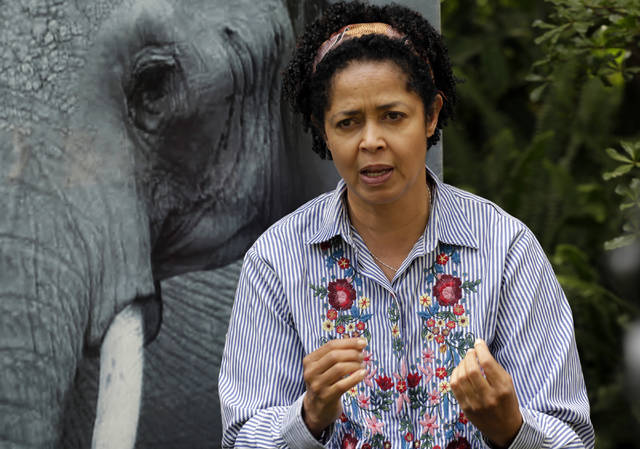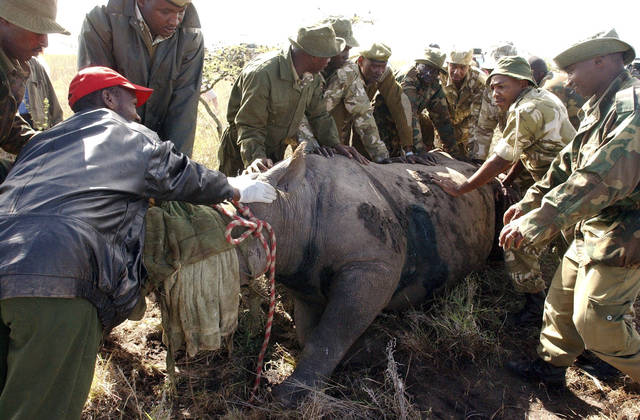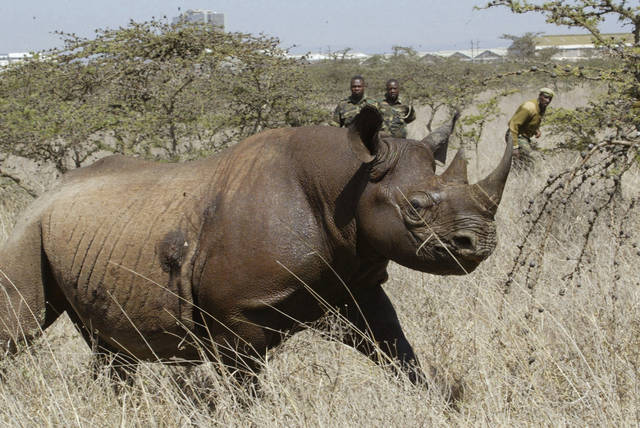NAIROBI, Kenya — Eight critically endangered black rhinos are dead in Kenya after wildlife workers moved them from the capital to a new national park, the government said Friday, calling the toll “unprecedented” in more than a decade of such transfers.
Preliminary investigations point to salt poisoning as the rhinos tried to adapt to saltier water in their new home, the Ministry of Tourism and Wildlife said in a statement, describing how the animals likely became dehydrated and drank more salty water in a fatal cycle.
The ministry suspended the ongoing move of rhinos and said the surviving ones in the new park were being closely monitored.
The loss is “a complete disaster,” said prominent Kenyan conservationist Paula Kahumbu of WildlifeDirect.
Conservationists in Africa have been working hard to protect the black rhino sub-species from poachers targeting them for their horns to supply an illegal Asian market.
In moving a group of 11 rhinos to the newly created Tsavo East National Park from Nairobi last month, the Kenya Wildlife Service said it hoped to boost the population there. The government agency has not said how the rhinos died. Fourteen of the animals were to be moved in all.
“Disciplinary action will definitely be taken” if an investigation into the deaths indicates negligence by agency staff, the wildlife ministry said.
“Moving rhinos is complicated, akin to moving gold bullion, it requires extremely careful planning and security due to the value of these rare animals,” Kahumbu said in a statement. “Rhino translocations also have major welfare considerations and I dread to think of the suffering that these poor animals endured before they died.”
Transporting wildlife is a strategy used by conservationists to help build up, or even bring back, animal populations. In May, six black rhinos were moved from South Africa to Chad, restoring the species to the country in north-central Africa nearly half a century after it was wiped out there.
Kenya transported 149 rhinos between 2005 and 2017 with eight deaths, the wildlife ministry said.
According to WWF, black rhino populations declined dramatically in the 20th century, mostly at the hands of European hunters and settlers. Between 1960 and 1995 numbers dropped by 98 percent, to fewer than 2,500.
Since then the species has rebounded, although it remains extremely threatened. In addition to poaching the animals also face habitat loss.
African Parks, a Johannesburg-based conservation group, said earlier this year that there are fewer than 25,000 rhinos in the African wild, of which about 20 percent are black rhinos and the rest white rhinos.
In another major setback for conservation, the last remaining male northern white rhino on the planet died in March in Kenya, leaving conservationists struggling to save that sub-species using in vitro fertilization.
———
Follow Africa news at https://twitter.com/AP—Africa





Again, those backward barbaric Chinese mindset of using rhino horn so that old Chinese men from China can get it up to satisfy his young Chinese mistress decimating not only rare black and white rhinos, but also tiger paws and other rare animals.
Just wait when these barbaric Chinese start decimating all ocean life in their self proclaimed “South China Seas”, using vaccum like dredging drag nets to scour the ocean floor of all life until it becomes a desert killing everything in sight.